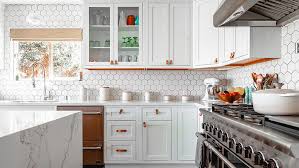Calculating the Average Cost to Remodel Your House

The Average Cost to Remodel a House
Remodeling a house can be an exciting yet daunting task, especially when it comes to budgeting. The cost of remodeling a house can vary significantly depending on the size of the project, the materials used, and the extent of the renovations.
On average, homeowners in the United States can expect to pay anywhere from $20,000 to $75,000 for a basic remodel of a small to medium-sized house. This cost typically includes renovations to one or more rooms such as the kitchen, bathroom, or living room.
For larger projects that involve multiple rooms or extensive structural changes, the average cost can range from $75,000 to $200,000 or more. These types of remodels often include additions, roof replacements, or complete home renovations.
It’s important for homeowners to carefully plan and budget for their remodeling projects to ensure they stay within their financial means. Factors that can influence the cost of remodeling a house include:
- The size and scope of the project
- The quality of materials used
- Labor costs in your area
- Permitting and inspection fees
- Unforeseen issues or complications during construction
To get an accurate estimate for your specific remodeling project, it’s recommended to consult with multiple contractors and obtain detailed quotes outlining all costs involved. Additionally, setting aside a contingency fund of 10-20% of your total budget can help cover any unexpected expenses that may arise during construction.
While remodeling a house can be a significant investment, it has the potential to increase the value and functionality of your home. By carefully planning and budgeting for your remodel, you can create a space that meets your needs and enhances your overall living experience.
Top 5 Tips for Estimating the Average Cost to Remodel Your Home
- Set a realistic budget based on your needs and priorities.
- Obtain multiple quotes from different contractors to compare costs.
- Consider the long-term value of materials and fixtures to balance cost and quality.
- Plan ahead for unexpected expenses by including a buffer in your budget.
- Prioritize renovations that add the most value to your home for potential resale.
Set a realistic budget based on your needs and priorities.
Setting a realistic budget based on your needs and priorities is crucial when planning a house remodel. By identifying the key areas that require renovation and determining your must-haves versus nice-to-haves, you can allocate your budget effectively. Consider factors such as the functionality of the space, desired aesthetics, and any long-term value the renovations may bring. Prioritizing your needs will help you make informed decisions throughout the remodeling process and ensure that you stay within your financial means while achieving a successful outcome.
Obtain multiple quotes from different contractors to compare costs.
Obtaining multiple quotes from different contractors is a crucial step in planning a house remodel. By comparing costs from various professionals, homeowners can gain valuable insight into the range of prices for their project and ensure they are getting a fair deal. Each contractor may have different pricing structures, material preferences, and levels of expertise, so obtaining multiple quotes allows homeowners to make an informed decision based on both cost and quality. This practice not only helps in budgeting effectively but also ensures that the chosen contractor aligns with the homeowner’s vision for the remodel.
Consider the long-term value of materials and fixtures to balance cost and quality.
When planning a house remodel, it is essential to consider the long-term value of materials and fixtures to strike a balance between cost and quality. Investing in high-quality materials and fixtures may initially come with a higher price tag, but they can offer durability, longevity, and aesthetic appeal that can enhance the value of your home in the long run. By prioritizing quality over cost-cutting measures, you can ensure that your remodel not only looks great but also stands the test of time, ultimately saving you money on future repairs or replacements.
Plan ahead for unexpected expenses by including a buffer in your budget.
When considering the average cost to remodel a house, it is crucial to plan ahead for unexpected expenses by incorporating a buffer in your budget. Including a contingency fund of 10-20% of your total budget can help cushion any unforeseen costs that may arise during the remodeling process. By preparing for unexpected expenses, homeowners can navigate potential challenges with greater ease and ensure that their project stays on track financially.
Prioritize renovations that add the most value to your home for potential resale.
When considering the average cost to remodel a house, it is essential to prioritize renovations that add the most value to your home, especially if you are thinking about potential resale in the future. Focus on projects that have a high return on investment, such as kitchen and bathroom upgrades, adding curb appeal with landscaping improvements, or increasing energy efficiency with new windows or insulation. By strategically allocating your budget towards renovations that enhance both the aesthetic appeal and functionality of your home, you can maximize its resale value and attract potential buyers down the line.
